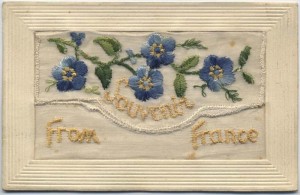Hugo and the Great War
A pale blue uniform set against a Paris railway station as it busies itself with a new day. As the city’s people move through the station, another brings fresh flowers upon a cart for today’s sales to the myriads that will pass by. There are cafes with bands and specialty shops that enjoy the expertise of their proprietors, trains and timepieces, books, and an automaton whose all-knowing face provides evocation. The whole while everyone and everything, ticking along in this giant wheel of life.
We are in Hugo’s world a film directed by Martin Scorsese that sets us upon an adventure and reminds us that there is gentleness in fine story-telling. It tells us of the possibilities that still exist in film making when the story is genuine and with evocation at the helm the art can be practiced to masterful levels.
Personally I always look for a little bit extra in any film, you may recall “a little more essence”? I am not disappointed. In one scene we watch Gustave the station inspector and Lisette the flower cart girl. Gustave, is a veteran of the Great War with a mechanical brace to assist his injured leg and a black glove upon one hand. The blue of his tunic similar to the soldier’s uniforms of France’s Great War army and the fine embroidery upon his cap evocative of the embroidered silk postcards generated in cottage industries throughout France and Flanders during that war to end all wars.
Lisette, a girl Gustave wishes to visit more often, pins a blue and yellow flower upon his lapel after telling him she lost a brother to the Great War. It is a kindly gesture by Lisette that makes me think of another flower, the bleuet (blue cornflower). Like the poppy it is a flower of the fields and a symbol used by the French as their flower of remembrance. Oh to see those fields filled with poppies and cornflowers, for they grow side by side, and with the addition of white daisies the trio represents the tri-color of France. There is another blue as well, that of the forget-me-not with its yellow center and often featured in those earlier mentioned silks that were acquired by servicemen to send home to loved ones.
Watch then the colours in Hugo as they accentuate and harness the movement in much of what we see. The repetition of blues especially; the colour of the bleuet and the forget-me-not appears in the eyes of Hugo, in the stripes of his sweater, and in every frame of this feature. Hugo is a story that speaks to the memories of history and how they might be celebrated or overcome; it gives back to an elder and provides for a youngster. Hugo speaks of remembrance and in the silent voice of an automaton gives voice to the power of story-telling.


Comments